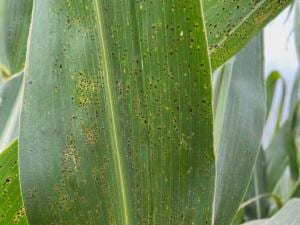Have you ever wondered or debated with others on which crop should be planted first – corn or soybean?
- Which crop has the smallest yield penalty for delayed planting?
- Can you adjust your management practices to mitigate losses due to late planting?
- How are insects, diseases, weeds, and other factors affected by planting date?
For soybean and corn, earlier planting is promoted to maximize yield; however, the planting date window is often short and disconnected due to bad weather. As a result farmers often ‘debate’ which crop should be planted first – corn or soybean.
Follow along with Dr. Laura Lindsey and Dr. Osler Ortez as they ‘Battle for the Belt’. Videos and updates will be posted on the CORN newsletter and the AgCrops Team Youtube channel. Click here to access the YouTube playlist.
Research: the plan is to conduct field experiments at three locations in 2023: Western, Northwest, and Wooster. Five planting date windows:
- Ultra-early (first two weeks of April)
- Early (second two weeks of April)
- Normal (first two weeks of May)
- Late (last two weeks of May)
- Very late (first two weeks of June)
Corn and soybean will be planted side by side on each planting date. The plan is to repeat the study in 2024.
Extension: on the extension side, we plan on having short, bi-weekly video updates from the field that will be advertised through the CORN newsletter, YouTube, and Twitter. Video updates will include agronomists (OSU and others), other specialists (e.g., plant pathology, weed science, entomology), and farmers. Each will ‘weigh’ the benefits/drawbacks of planting each crop too early or too late. In addition, the research outcomes will be presented as extension articles and talks at extension programming events and field days across the state.





 By: Stephanie Karhoff
By: Stephanie Karhoff Contrary to what was observed over the last three growing seasons when tar spot was restricted to a few counties in the NW corner of the state, in 2021, the disease has so far been reposted in 21 counties, including as far South as Clark County and as far east as Holmes County. In the past, the disease was seen late in the season (after R4), but this year it was reported in some fields at or before silking (R1). In most of the effected fields, only a few stromata (black tar-like spots) are observed on a few leaves, but in other cases, large sections of fields are affected and there is evidence of an increase in disease severity (percentage of leaf surface covered with stromata) as the crop matures. Severely affected fields show premature drying and wilting of leaves. Another interesting observation is the different in the pattern of development of stromata among hybrids. Disease severity varies considerable among hybrids; some affected hybrids develop many small spots (stromata) that do not seem to increase in size over time, whereas other hybrids develop fewer, but much larger stromata.
Contrary to what was observed over the last three growing seasons when tar spot was restricted to a few counties in the NW corner of the state, in 2021, the disease has so far been reposted in 21 counties, including as far South as Clark County and as far east as Holmes County. In the past, the disease was seen late in the season (after R4), but this year it was reported in some fields at or before silking (R1). In most of the effected fields, only a few stromata (black tar-like spots) are observed on a few leaves, but in other cases, large sections of fields are affected and there is evidence of an increase in disease severity (percentage of leaf surface covered with stromata) as the crop matures. Severely affected fields show premature drying and wilting of leaves. Another interesting observation is the different in the pattern of development of stromata among hybrids. Disease severity varies considerable among hybrids; some affected hybrids develop many small spots (stromata) that do not seem to increase in size over time, whereas other hybrids develop fewer, but much larger stromata.